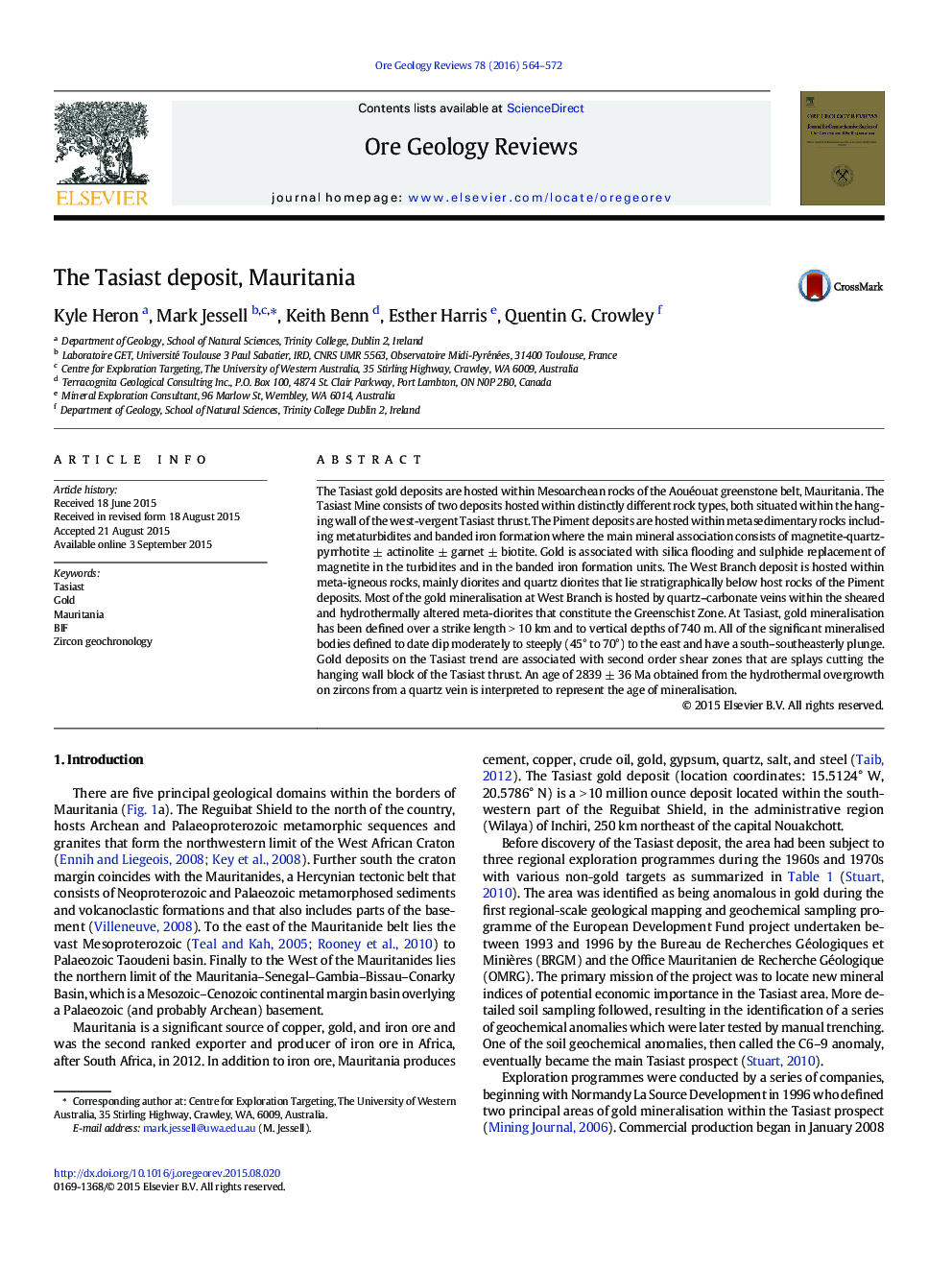| کد مقاله | کد نشریه | سال انتشار | مقاله انگلیسی | نسخه تمام متن |
|---|---|---|---|---|
| 4696868 | 1637228 | 2016 | 9 صفحه PDF | دانلود رایگان |

• First published description of the > 10 Moz Tasiast gold deposit, Mauritania
• Chronology of quartz veining and gold mineralisation
• An age of 2839 ± 36 Ma obtained from the hydrothermal overgrowth on zircons
• This age is interpreted to represent the age of mineralisation.
The Tasiast gold deposits are hosted within Mesoarchean rocks of the Aouéouat greenstone belt, Mauritania. The Tasiast Mine consists of two deposits hosted within distinctly different rock types, both situated within the hanging wall of the west-vergent Tasiast thrust. The Piment deposits are hosted within metasedimentary rocks including metaturbidites and banded iron formation where the main mineral association consists of magnetite-quartz-pyrrhotite ± actinolite ± garnet ± biotite. Gold is associated with silica flooding and sulphide replacement of magnetite in the turbidites and in the banded iron formation units. The West Branch deposit is hosted within meta-igneous rocks, mainly diorites and quartz diorites that lie stratigraphically below host rocks of the Piment deposits. Most of the gold mineralisation at West Branch is hosted by quartz–carbonate veins within the sheared and hydrothermally altered meta-diorites that constitute the Greenschist Zone. At Tasiast, gold mineralisation has been defined over a strike length > 10 km and to vertical depths of 740 m. All of the significant mineralised bodies defined to date dip moderately to steeply (45° to 70°) to the east and have a south–southeasterly plunge. Gold deposits on the Tasiast trend are associated with second order shear zones that are splays cutting the hanging wall block of the Tasiast thrust. An age of 2839 ± 36 Ma obtained from the hydrothermal overgrowth on zircons from a quartz vein is interpreted to represent the age of mineralisation.
Journal: Ore Geology Reviews - Volume 78, October 2016, Pages 564–572